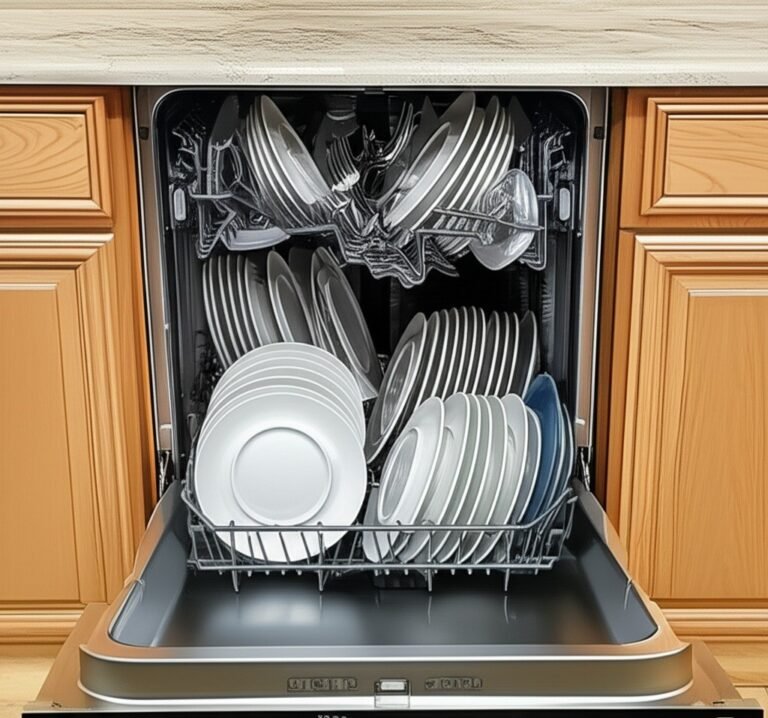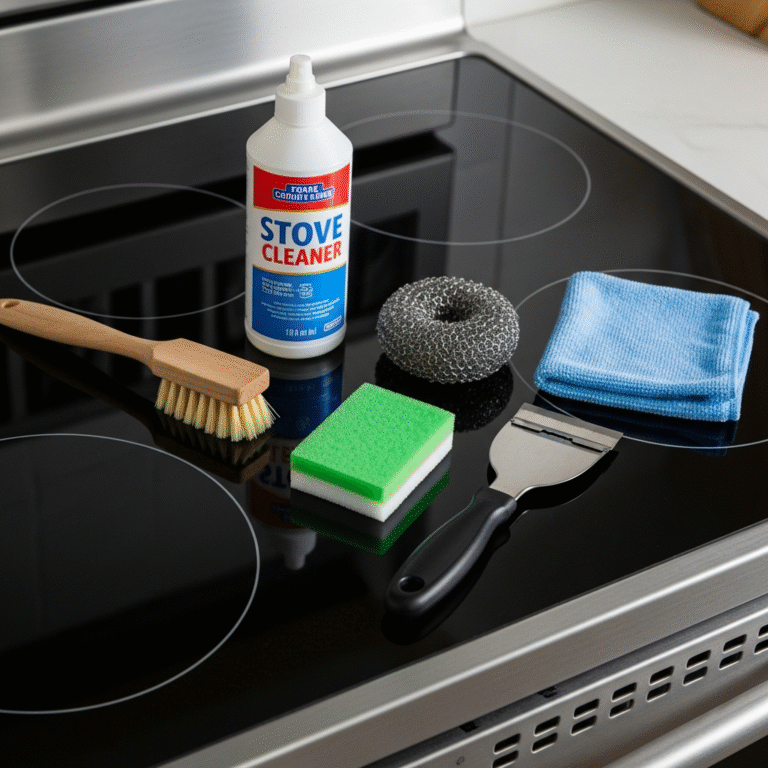The critical Dishwasher Cleaning Mistakes that are ruining your dishes, dishwasher is an instrument of precision, not a brute-force cleaning bin. Its ability to produce sparkling, sanitized dishes is entirely dependent on the user’s understanding of its mechanical and chemical processes. When dishes emerge still dirty, streaked, or wet, the fault lies not with the machine, but with a series of preventable and often repeated Dishwasher Cleaning Mistakes. Rectifying these errors transforms the appliance from a source of frustration into the reliable workhorse it was designed to be.
1.Loading
The most fundamental failures originate with loading. The core principle of a dishwasher is the systematic spraying of every dish surface with high-pressure, hot, detergent-laden water. Anything that obstructs this spray guarantees a failed cleaning. Overcrowding is the most common violation of this principle. The temptation to fit one more plate or bowl is strong, but doing so creates “water shadows.” A large bowl placed incorrectly can block the spray from reaching half a dozen smaller items behind it. This leads not only to the shielded items remaining dirty but to a more insidious problem: food particles trapped on those dishes can become loosened by the heat and steam, only to be blasted across the machine during the rinse cycle. This is the source of the dreaded gritty film that can coat supposedly clean glasses and plates. These types of Dishwasher Cleaning Mistakes actively make other dishes dirtier. Each item requires clearance on all sides for the water to circulate.
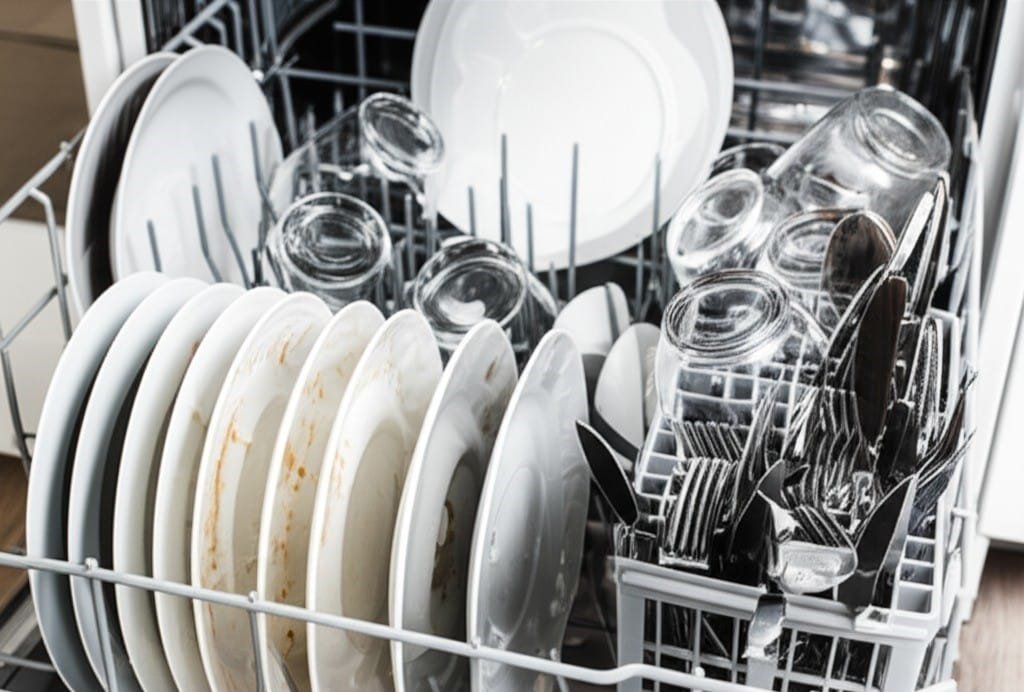
2.Right Position
Equally important is the orientation of the dishes. The primary spray arms are located at the bottom of the tub and often underneath the top rack, meaning the water’s primary trajectory is upward. As a consequence, all soiled surfaces must face down and be angled toward the center of the machine where the spray is most concentrated. Placing a bowl upright is a classic example of Dishwasher Cleaning Mistakes; its interior will remain a dry, dirty island. Cups, glasses, and bowls belong on the top rack, angled downward between the tines to maximize exposure. Plates on the bottom rack should be arranged in the tines so they face the central spray, not all aligned in one direction against the side. The tines themselves are angled to achieve this optimal positioning. Large, flat items like cutting boards and baking sheets must be placed on the periphery along the sides or back of the bottom rack. Placing one at the front can physically block the detergent door from opening or impede the rotation of the lower spray arm, effectively neutralizing the entire wash cycle and creating one of the most frustrating Dishwasher Cleaning Mistakes to diagnose.
The division of the racks is deliberate. The bottom rack is a zone of high intensity, situated directly above the main heating element and in the path of the most powerful water jets. This area is reserved for durable items: ceramic plates, stainless steel pots, and sturdy pans. The top rack provides a gentler wash, making it the safe haven for more delicate items. All plastics, even those labeled “dishwasher safe,” must be placed on the top rack. The intense, direct heat from the lower heating element will inevitably warp or melt plastic placed on the bottom rack, a permanent form of damage that ranks high among costly Dishwasher Cleaning Mistakes. The heat can also cause certain plastics to degrade and potentially leach chemicals. Delicate glassware, too, belongs on the top rack, secured between tines to prevent it from rattling against other items and chipping.
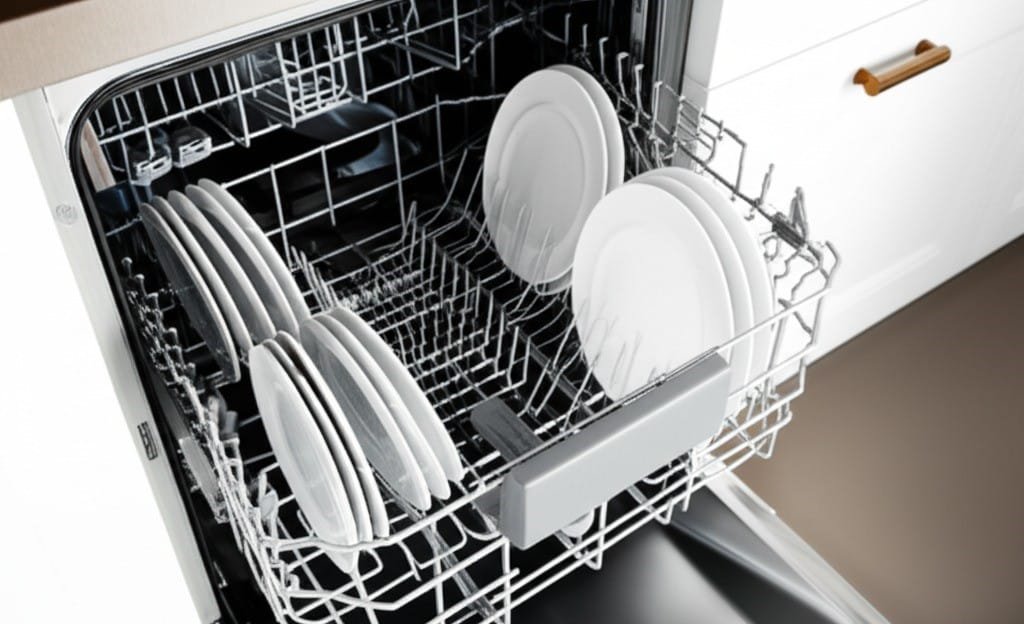
Utensil loading is a science in itself. Simply dumping cutlery into the basket leads to “nesting,” where identical shapes, especially spoons, fit together and form a waterproof seal. To prevent this, utensils must be mixed. Alternate placing some handles up and some handles down. Distribute forks, spoons, and knives across different compartments. This simple act of separation is vital to avoid these common Dishwasher Cleaning Mistakes. For safety, sharp knives should always be placed blade-down, though it must be stressed that fine cutlery should never be subjected to a dishwasher’s harsh environment.
3.Be Careful
This leads to arguably the most destructive category of Dishwasher Cleaning Mistakes: washing items that are not dishwasher-safe. The damage is often irreversible. Wood, including cutting boards, utensils, and knife handles, will absorb the hot water and swell, then crack and split as the heat-dry cycle rapidly removes the moisture. Cast iron cookware will be stripped of its vital seasoning—the polymerized oil layer that provides its non-stick quality. The harsh detergents are designed to dissolve grease and oil, so they directly attack this layer, exposing the raw iron which will immediately begin to rust. High-carbon steel chef’s knives suffer a dual assault: the chemicals in the detergent micro-corrode the fine blade edge, while the physical jostling against racks dulls it. Most non-stick pans will have their delicate coatings slowly abraded by the detergents. Fine china with metallic trim or hand-painted patterns will be chemically stripped by the heat and powerful cleaning agents. Insulated travel mugs can lose their vacuum seal due to the extreme temperature fluctuations, rendering them useless. These are not minor mishaps; they are severe Dishwasher Cleaning Mistakes that ruin valuable kitchen tools.
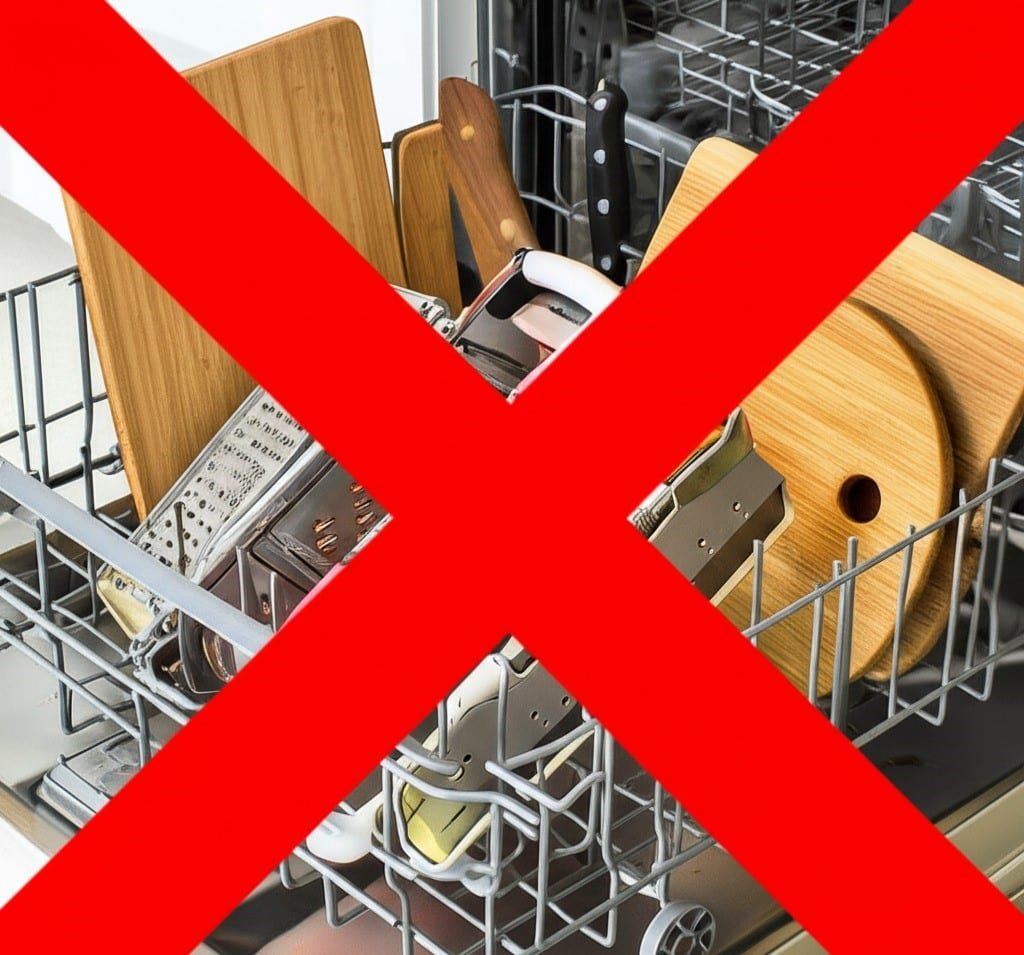
4.Very Clean
Paradoxically, being too clean before loading is also an error. Many modern dishwashers are equipped with soil sensors, often a turbidity sensor that shines a light through the wash water to measure how dirty it is. When you pre-rinse dishes to a squeaky-clean state, the sensor detects very little soil in the water. The machine’s logic then concludes it’s a light load and runs a shorter, more energy-efficient cycle. This may be insufficient for any genuinely dirty pots or pans elsewhere in the load. Furthermore, modern detergents are packed with enzymes like amylase and protease, which are designed to break down starches and proteins. These enzymes need a substrate food to work on. By pre-rinsing, you are essentially washing away the target of the detergent, making it less effective. Scraping off large chunks of food is all that’s needed. Over-rinsing is one of the most widespread and misunderstood Dishwasher Cleaning Mistakes.
The detergent itself is a frequent source of error. The single most catastrophic error is using liquid soap designed for hand-washing dishes. It is formulated to create copious suds, which will quickly overwhelm your dishwasher, creating a foam monster that pours onto your kitchen floor. This can also damage the machine’s pumps and water-level sensors. Only detergents specifically labeled for automatic dishwashers should be used. Using too much of an approved detergent will not make dishes cleaner; it will leave a chalky or soapy film. Using too little will result in a poor wash. These are basic Dishwasher Cleaning Mistakes that are easily corrected by reading the instructions.
5.Rinse Aid
Rinse aid is not an optional luxury; it is a critical component for a perfect finish. Failing to use it is one of the most common Dishwasher Cleaning Mistakes that leads to spots and wet dishes. Rinse aid is a surfactant, meaning it breaks the surface tension of the water during the final hot rinse. Instead of forming droplets that cling to surfaces and leave behind mineral deposits (water spots) as they evaporate, the water sheets off in a thin layer. This dramatically improves drying performance, especially on plastics which do not retain heat as well as glass or ceramics.
At the end, the most neglected area is machine maintenance. These are the slow-burn Dishwasher Cleaning Mistakes that degrade performance over months. Your dishwasher cleans your dishes, but it does not clean itself. At the bottom of the tub is a filter system, usually a cylindrical mesh screen that twists out. This filter traps food debris and prevents it from clogging the drain pump. If it becomes clogged, the machine will be forced to recirculate what is essentially a dirty food soup back onto your dishes. This is the primary cause of grit on clean dishes and foul odors. The filter must be removed and rinsed under hot water at least once a month. Failing to do so is one of the most unhygienic Dishwasher Cleaning Mistakes. The spray arms also require inspection, as the small water jet holes can become clogged with hard water deposits or debris. Running an empty cycle on the hottest setting with a cup of white vinegar on the top rack every few months will dissolve grease and mineral buildup in the arms, hoses, and pump. Even the simple act of unloading has a correct procedure. Always unload the bottom rack first. The concave tops of mugs and glasses on the upper rack inevitably collect a small pool of water. Pulling the top rack out first will spill this water all over your dry dishes below. Avoiding these persistent Dishwasher Cleaning Mistakes is essential to transforming your dishwasher into a reliable and effective cleaning partner.
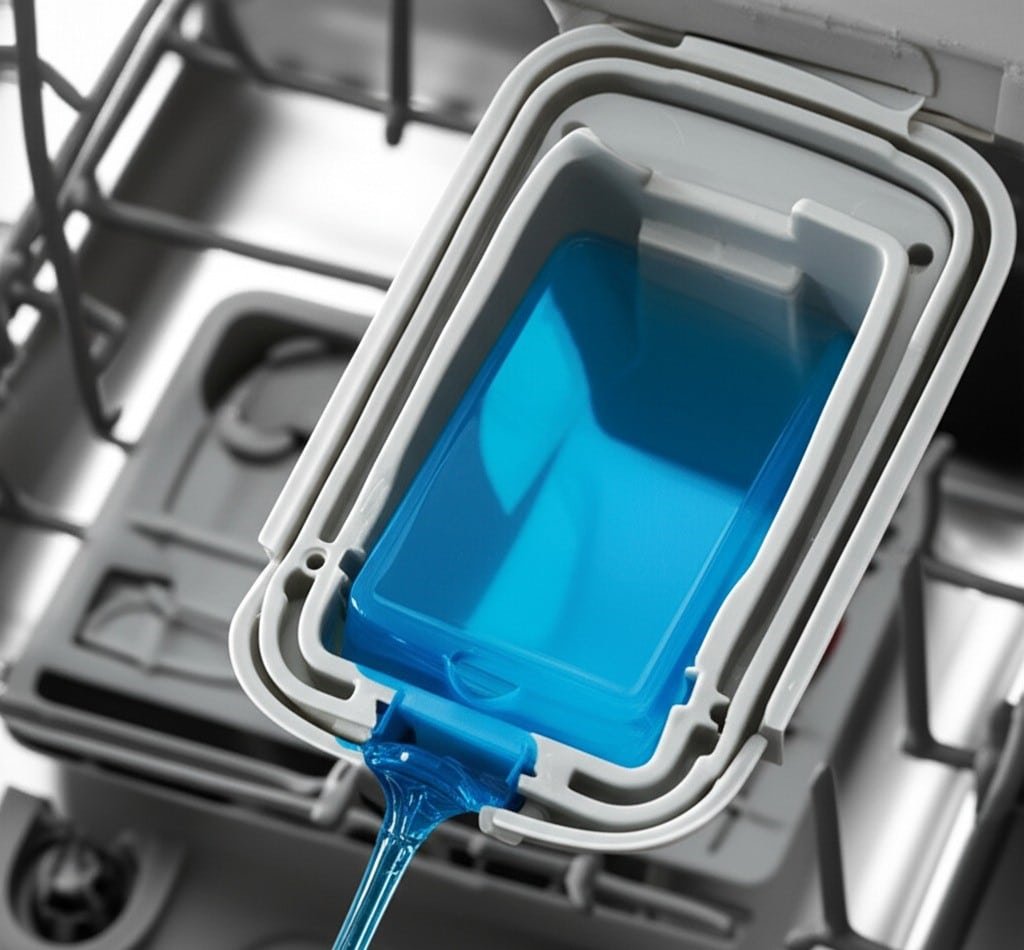
Avoiding the full spectrum of Dishwasher Cleaning Mistakes, from meticulous loading to consistent maintenance, is the difference between frustration and spotless results. This level of detail and understanding is the foundation of a truly clean home. Toronto Shine Cleaning applies this same expert knowledge to every aspect of your living space, ensuring that all cleaning tasks, big and small, are performed correctly for a pristine outcome.













